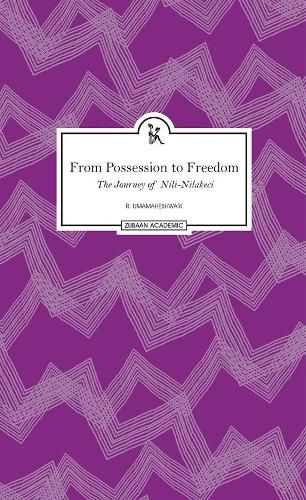Readings Newsletter
Become a Readings Member to make your shopping experience even easier.
Sign in or sign up for free!
You’re not far away from qualifying for FREE standard shipping within Australia
You’ve qualified for FREE standard shipping within Australia
The cart is loading…






The Tamil text Nīlakeci, dated around the 5th century CE (debated), is an unusual literary creation. It retrieves a violent, vengeful pYYYYy (female possessing spirit) of Palayanur, transforming her into a Jaina philosopher. It was a profoundly subversive idea of its time, using the female persona and voice (for a hitherto disembodied being) to debate with preceptors of different schools of thought/religions of the time, all male, barring the Buddhist nun, Kuntalakeci. Nīlakeci’s debates focus on questions of non-violence, existence of the soul, authorship and caste, among others.
However, in order to truly appreciate this alter-texting, one has to unravel layers of other texts and traditions: the lesser known villuppattu (bow-song) and natakam (theatrical) versions of the pYYYYy Nīli stories, as well as the story of Kuntalakeci’s own transformative journey. Umamaheshwari situates these in a comparative context, while maintaining the centrality of the debates within Nīlakeci, using translation of selected excerpts.
$9.00 standard shipping within Australia
FREE standard shipping within Australia for orders over $100.00
Express & International shipping calculated at checkout
The Tamil text Nīlakeci, dated around the 5th century CE (debated), is an unusual literary creation. It retrieves a violent, vengeful pYYYYy (female possessing spirit) of Palayanur, transforming her into a Jaina philosopher. It was a profoundly subversive idea of its time, using the female persona and voice (for a hitherto disembodied being) to debate with preceptors of different schools of thought/religions of the time, all male, barring the Buddhist nun, Kuntalakeci. Nīlakeci’s debates focus on questions of non-violence, existence of the soul, authorship and caste, among others.
However, in order to truly appreciate this alter-texting, one has to unravel layers of other texts and traditions: the lesser known villuppattu (bow-song) and natakam (theatrical) versions of the pYYYYy Nīli stories, as well as the story of Kuntalakeci’s own transformative journey. Umamaheshwari situates these in a comparative context, while maintaining the centrality of the debates within Nīlakeci, using translation of selected excerpts.